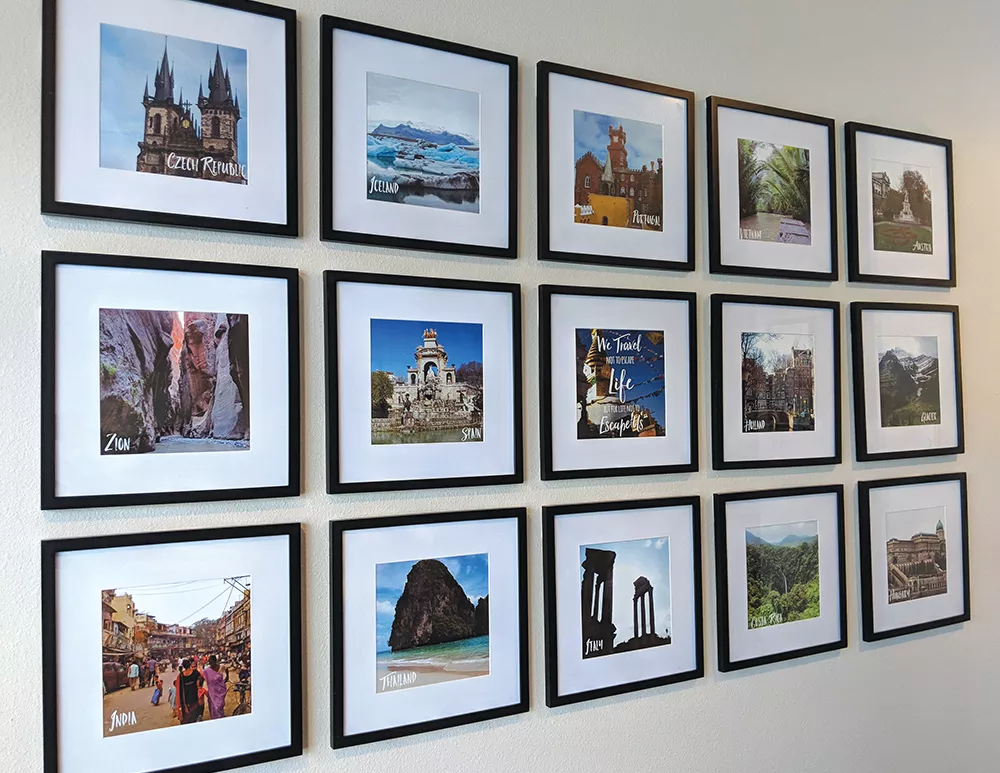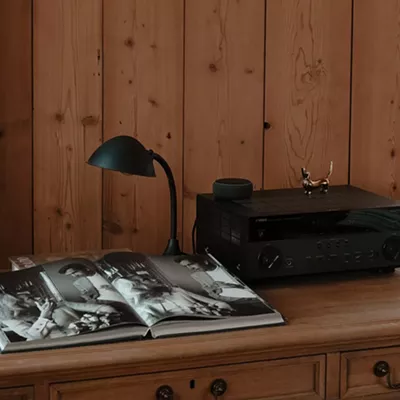
Summer's long gone, but the happy memories from travels don't have to fade away. Displaying photos from vacations and voyages is a fun way to tap into those experiences, and it creates a unique display — after all, those images on your camera and phone are one-of-a-kind.
"I am not artistic at all and for me this is my own way of having something that is mine," says Raevyn West, who crafted a display in her Kendall Yards apartment using frames she found online and the template that accompanied the set. The expense was minimal — about $60 for the frame set and a few dollars for printing the photos. A friend digitally adds a location stamp to each photo.
"This is a nice way of showing my creative side in a controlled way," West says.
She chooses to pick one photo from each of her travels — in her case that's one photo per country — to create a grid. She recently added new photos to the display.
"It is sometimes impossibly hard to pick just one photo, but I try and pick the one that really brings me back to that place," she says. Originally, she planned to swap out photos, but that has proven difficult. "I love them all so much!"
The display is a good conversation starter, too. "I work remotely sometimes and I have video conferences and everyone always comments on it," she says.
West also brings back other types of art from her travels — maps are a favorite item. And she tries to get an original piece of art from each country as well. Her next destination? Peru.
"I've traveled for a long time, and that's my passion point. It is the best art I can think of," she says.
PRO TIPS
When shooting photos, Health & Home photographer Don Hamilton suggests shooting in HDR mode on your phone if you can: "The increased dynamic range will pay great dividends in your final print." And it is best to avoid the zoom feature. "Get as close as you can to your subject and shoot full frame," then crop the image as needed later. If you are shooting with a digital single-lens reflex camera, choose the RAW setting to obtain the highest resolution. "You get fewer images on a card, but the ability to choose white balance after the fact is well worth it."
In choosing photos, Inlander and Health & Home photographer Young Kwak says to silence the inner critic: "Choose photos that look good to you. If there are a few photos that you absolutely love but aren't necessarily the best, don't be afraid to display them. You have to live with them, so you should be happy."
In photo displays, Hamilton and Kwak agree: The best way to display photos is in a black frame with a white matte. Be sure to choose acid free, archival mattes. "This suits me for both black and white, and color," says Hamilton. "Your work will look better if it's finished as it would be in a museum or gallery." For smaller photos, Kwak recommends the same framing treatment, with the photos organized in a "random, puzzle-like design." He adds that using a level and a chalk line or string can be helpful in making sure multiple photos are in line and level.
"I also like canvas prints, self-framed on stretcher bars," says Hamilton. For a sample of this technique, check out his canvas print portraits displayed in the Musicians Gallery in Spokane's Fox Theater.


















